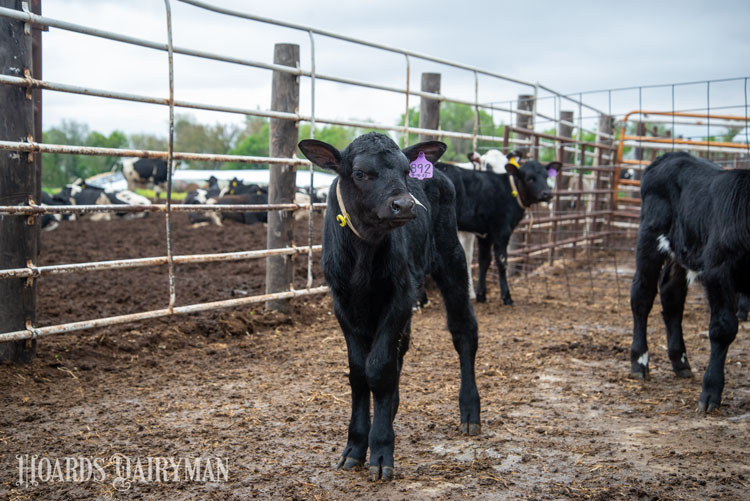
Dairy-beef animals are a hot commodity right now. Many dairy farmers want to make them to take advantage of better market prices and right-size replacement numbers, and the beef industry can use them to offset this year’s roughly one million head reduction in the national beef herd. It is a prime opportunity for dairy farmers to provide a valuable co-product while generating additional income.
Over three million dairy-beef calves are expected to hit the ground next year, said Margaret Quaassdorff, a dairy management specialist with Cornell Cooperative Extension. If dairy farmers continue to make a high-quality product, the current high beef prices can be sustained for those animals and in the future even if the native beef herd numbers bounce back, she continued during a “Cornell Cow Convos” podcast episode.
Dairy-beef meat has been shown to perform better than straight dairy meat in taste tests because it marbles well, which also raises the value and quality of the carcass, Quaassdorff said. It oxidizes less in grocery store cases, making it attractive to consumers and therefore the stores. Further, the dairy industry produces calves year-round and excels at traceability. “That’s something the native beef industry has some strength in, but they can make some improvements in,” continued Quaassdorff. All of these aspects create value opportunities for dairy producers.
Taking advantage of those opportunities requires attention to a few areas, discussed Quaassdorff and fellow Cornell Cooperative Extension dairy management specialist Betsy Hicks:
- Calf care — A survey they did of New York farmers found that most farms implemented calf care practices such as colostrum, navel care, and vaccines to calves including dairy-beef animals. This is critical especially for calves travelling at a young age, Quaassdorff reminded.
- Sire selection — Farmers and bull studs have learned a lot about what kind of beef traits are desirable in these animals. Attention to ribeye shape, frame size, growth, and feed efficiency leads to a more valuable end product. “We’re creating a better calf because we’re selecting better sires,” said Hicks. Quaassdorff reminded that it is a good idea to still keep in mind traits like gestation length and calving ease.
- Have a plan — Whether you want to prepare for expansion or just maintain your current size, be sure to recognize your true replacement needs far enough in advance to create them. You can’t wait to change up your beef strategy until you need heifers, Quaassdorff said.
- Know your market — How are you going to sell these calves? “Typically, you get more bang for your buck if you have a buyer,” Quaassdorff noted when comparing a contract to sending calves through a sale barn. This is especially true if you have a Jersey herd, she emphasized. If you are raising crossbreds on the farm, develop a ration that works and is not cost prohibitive. Hicks added that if you are keeping them to finishing, make sure butcher spots are available. “It’s not as easy as the milk truck showing up every day,” she said.
Beef-on-dairy breeding is still developing and changing, but it has made significant strides in the last decade to become a valuable part of many dairy farms. “We have an opportunity to produce an even more efficient beef animal,” summarized Hicks. Doing it well benefits both sides of the cattle industry as well as beef consumers.








